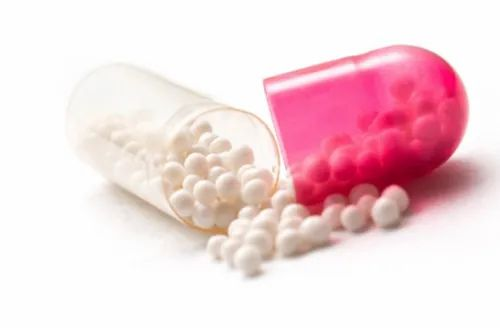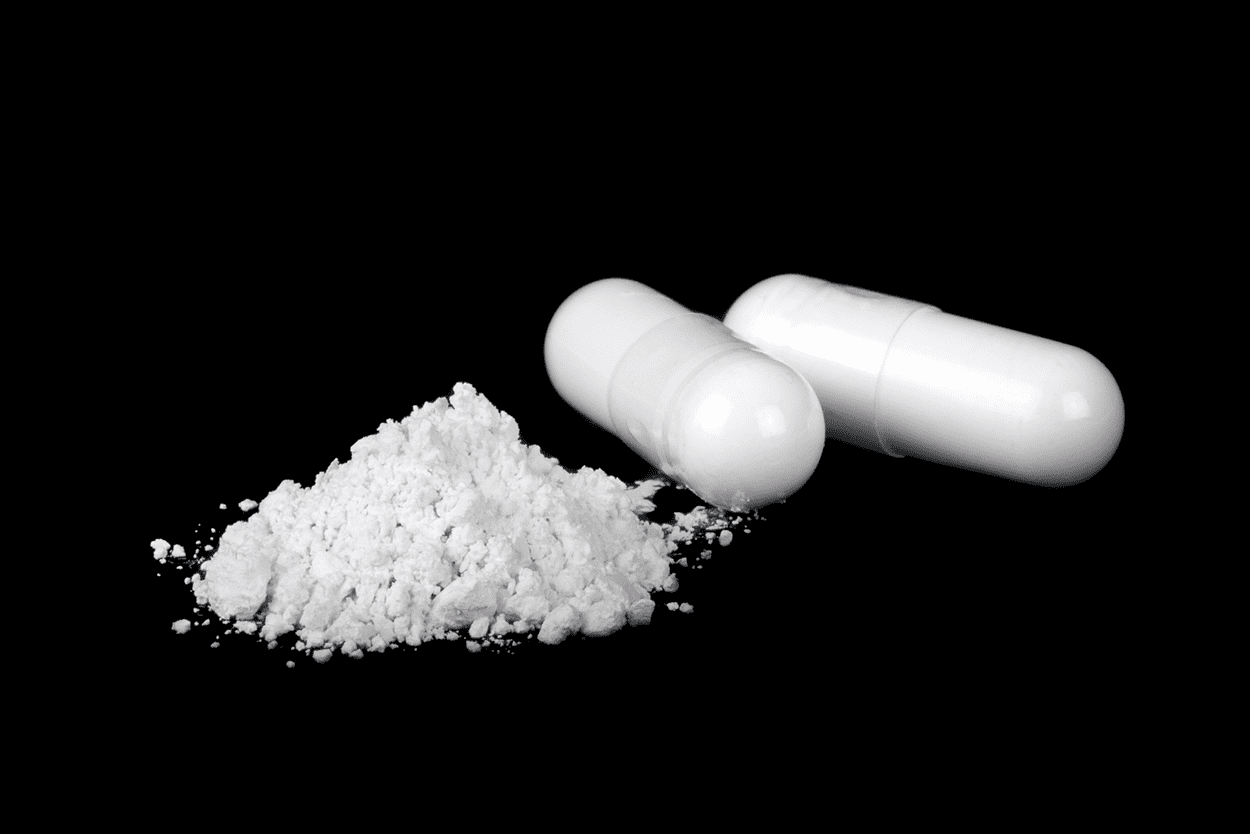What Capsule Dosage Forms Can be Used in Capsule Fillers?
Are you running a pharmaceutical business? Before learning how to make capsules and buying your best capsule filling machine, you definitely want to know the types and sizes of capsules encapsulators can fill.
To give you a quick overview of capsules for filling, this article mainly focuses on the two main points: types of materials applicable to filling, and types of capsules used for filling. On top of these, I’ve attached a capsule size chart in the last section.
Let’s get into the details.
What types of fill material can be used in capsule filling machines?
This topic is mainly about the application of capsule filling machines. On top of the materials listed below, there are 6 key applications of capsule fillers in total.
Pellets

Pharmaceutical pellets are in the form of small grains that are made from fine powders or granules. They are popular fill across the industry, for they can be combined with different fill materials. For example, you can fill capsules with two types of pellets or with pellets and powder.
With the aid of pellets, capsule development has become increasingly flexible.
Powder

The powder is one of the most common fill materials used in capsules. It is a kind of fine particle produced by the grinding or pounding of solid substances. Generally speaking, powder filling is not that sophisticated. So when equipping powder capsule fillers, their hoppers and dosing systems tend to adopt simpler structures.
What are the different types of capsules available for capsule filling machines?
There are two main types of capsules that can be filled by capsule filling machines:
- Gelatin capsules
- Vegetarian capsules
Further, gelatin capsules can be divided into:
- Hard gelatin capsules
- Soft gelatin capsules
And vegetarian capsules can be distinguished into two types too:
- HPMC capsules
- Pullulan capsules
Gelatin capsules vs. vegetarian capsules
Since these two types of capsules are the most common in the market, you need to make sense of their differences, so that you can select the types of capsule fillers accordingly.
Gelatin capsules are made from the collagen of animal skin or bones. In contrast, veggie capsules are made from natural vegetarian ingredients and plants.
Their common benefits include: easy-to-swallow and tasteless features, as well as a high level of stability and high bioavailability.
In general, veggie and gelatin capsules are both popular options across the pharmaceutical industry and can be used interchangeably. But they still have their own advantages and disadvantages.
- Cost
In terms of cost, gelatin capsules have a real competitive edge. They don't need many complex processes from raw materials to the final product. While to extract and process HPMC, manufacturers have to use more sophisticated machines, which makes vegetarian capsules more expensive.
- Customer preference
In terms of customer preference, veggie capsules tend to take more market share, since they are acceptable to vegetarians. These people follow a strict religious diet, so they don’t consume capsules that contain animal ingredients.
- Stability
In terms of stability, veggie capsules have lower moisture content (2%-3%) and are more resistant to humid conditions. In comparison, the moisture content of gelatin capsules ranges from 13% to 17%. So they are less water resistant.
This means powder formulations work well with gelatin capsules, while veggie capsules are more suitable for filling liquids and semi-solid formulations. (You need the process of sealing or banding to enable gelatin capsules to hold liquids)
- Encapsulation difficulty
Last but not least, the encapsulation difficulty of veggie capsules tends to be higher due to their physical characteristics. And sometimes, their materials are incompatible with the oil base, presenting a great challenge for manufacturers.
Hard gelatin capsules vs. soft gelatin capsules
With the category of gelatin categories, you are expected to make sense of both the hard and the soft types, so that you can find your ideal capsule filling machines.
Compared to hard gelatin capsules, soft gelatin capsules have softer shells that are made from more flexible, plasticized gelatin film. And their main differences can be summarized below:
- Structures
In general, hard gelatin capsules have two parts:
1. Shorter but wider caps for encapsulation
2. Longer but thinner bodies for filling materials
Their two pieces' structure means they can be first manufactured and then filled by capsule filling machines.
In contrast, soft gelatin capsules are a single piece that can not be separated. They have to be filled and sealed with a successive operation.
- Shapes and sizes
The shape of hard gelatin capsules is fixed. You can always see their cylindrical shape in daily life. The differences are their sizes (from 000 to 5).
In comparison, soft gelatin capsules have various shapes, let’s say oblong, round, or oval. So their sizes are not fixed but are determined by their shapes.
- Fill Materials
These two capsules have different characteristics and can hold different materials.
Hard gelatin capsules are suitable for filling a wide range of products, including powders, pellets, granules, tablets, or combinations.
Soft gelatin capsules are typically made for holding liquids, semi-liquids, or unstable substances.
- Types of capsule filling machines
For hard gelatin capsules, the encapsulation machines available for filling include automatic, semi-automatic, and manual capsule filling machines.
But there is one thing to note: semi and automatic capsule filling machines can only fill joined capsules, while manual capsule fillers can fill both separated and joined capsules.
As for soft gelatin capsules, filling these capsules is challenging, which requires rotary dies or the reciprocating die process. To finish the filling and sealing of softgels, a softgel encapsulation machine is required.
What are the different sizes of capsules used in capsule fillers?
After learning the types of the capsule and fill materials used in capsule fillers, it’s time to get the capsule size specifications for you. These data are versatile, and you can apply them to both gelatin and vegetarian capsules. Hopefully, these capsule size charts can help you select capsules for your encapsulation machines.
THE DIMENSIONS OF THE CAPSULE
|
SIZE |
000 |
00 |
0 |
1 |
2 |
3 |
4 |
5 |
|
Capsule Volume (ml) |
1.37 |
0.95 |
0.68 |
0.50 |
0.37 |
0.30 |
0.21 |
0.13 |
|
Capsule Weight (mg) |
163 |
123 |
96 |
76 |
61 |
48 |
38 |
28 |
|
Body length (in) |
0.874 |
0.795 |
0.726 |
0.654 |
0.601 |
0.535 |
0.480 |
0.366 |
|
Body length (mm) |
22.20 |
20.20 |
18.44 |
16.61 |
15.27 |
13.59 |
12.19 |
9.30 |
|
Cap length (in) |
0.510 |
0.464 |
0.422 |
0.385 |
0.352 |
0.318 |
0.284 |
0.244 |
|
Cap length (mm) |
12.95 |
11.80 |
10.72 |
9.78 |
8.94 |
8.08 |
7.21 |
6.20 |
|
Well-knit length (in) |
1.029 |
0.925 |
0.854 |
0.765 |
0.709 |
0.626 |
0.563 |
0.437 |
|
Well-knit length (mm) |
26.1 |
23.5 |
21.7 |
19.4 |
18.0 |
15.9 |
14.3 |
11.1 |
|
Body diameter (in) |
0.376 |
0.322 |
0.289 |
0.261 |
0.239 |
0.219 |
0.199 |
0.184 |
|
Body diameter (mm) |
9.55 |
8.20 |
7.34 |
6.63 |
6.07 |
5.57 |
5.05 |
4.68 |
|
Cap diameter (in) |
0.390 |
0.336 |
0.300 |
0.272 |
0.250 |
0.229 |
0.209 |
0.193 |
|
Cap diameter (mm) |
9.91 |
8.54 |
7.64 |
6.91 |
6.35 |
5.82 |
5.32 |
4.91 |
Parameters to note:
a. Weight
The weights are given in milligrams (mg). Capsule Weight (mg) refers to the weight of each empty capsule.
b. Volume
The volume of capsules is given in milliliters (ml), which measures capsule capacity.
c. Cap length
Cap length refers to the length of the capsule cap that is shorter but wider than the capsule body. The measurements are given in both inches (in) and millimeters (mm).
d. Body length
Body length refers to the length of the capsule body that is longer but thinner than the capsule cap. The measurements are given in both inches (in) and millimeters (mm).
e. Well-knit length
The well-knit length refers to the length of a complete capsule (or a joined capsule).
As the cap and the body are locked together, the well-knit length is always shorter than the length of the cap, and the body is put together. The measurements are given in both inches (in) and millimeters (mm).
f. Body diameter and cap diameter
Body and cap diameter refers to the width of the capsule body and cap. The measurements are given in both inches (in) and millimeters (mm).
CAPSULE WEIGHT CAPACITY CHART (MG)
|
SIZE |
000 |
00 |
0 |
1 |
2 |
3 |
4 |
5 |
|
Density 0.6 g/ml |
822mg |
570mg |
408mg |
300mg |
222mg |
180mg |
126mg |
78mg |
|
Density 0.8 g/ml |
1096mg |
760mg |
544mg |
400mg |
296mg |
240mg |
168mg |
104mg |
|
Density 1 g/ml |
1370mg |
950mg |
680mg |
500mg |
370mg |
300mg |
210mg |
130mg |
|
Density 1.2 g/ml |
1644mg |
1140mg |
816mg |
600mg |
444mg |
360mg |
252mg |
156mg |
Parameters to note:
Capsule weight capacity
The capsule weight capacity chart above has given the data on the weight of fill materials.
You need to note that the types of fill materials determine the powder density. The typical powder densities are 0.6 g/ml, 0.8 g/ml, 1.0 g/ml, 1.2 g/ml.
And the measurements of capsule weight are given by multiplying the powder density (g/ml) by the capsule volume (ml).
Leave your comment
Also Offers


Containment Automatic Capsule Filling Machine SFK-703

Fully Automatic Dosator Capsule Filling Machine CZ-40

Our Team
As an expert in the pharmaceutical and pharmaceutical packaging industry, iPharMachine has provided solutions for hundreds of pharmaceutical and health product manufacturers for 17 years. By visiting customers, we get good reviews from our customers.
- info@ipharmachine.com
- English Español Deutsche







